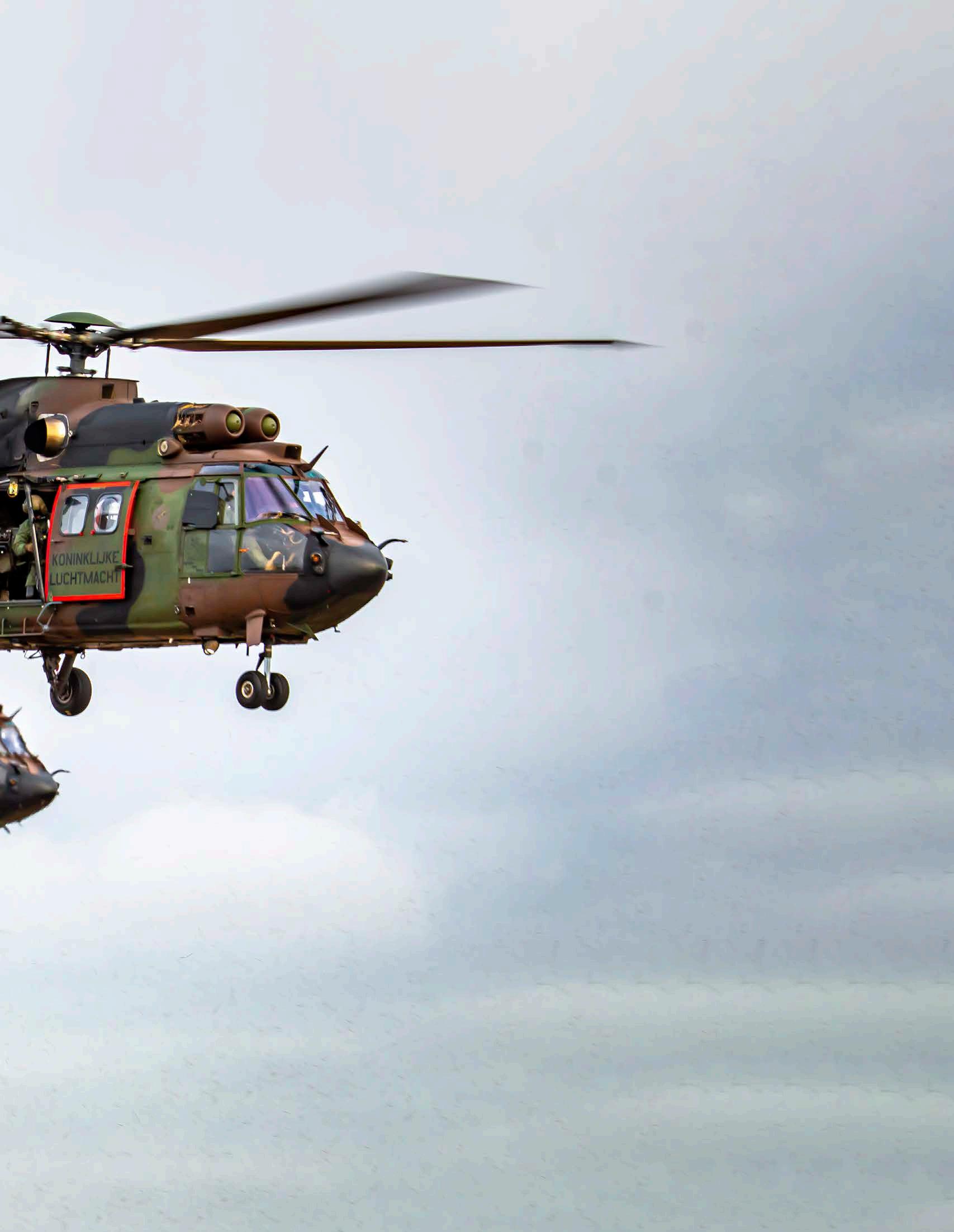
6 minute read
25 Years of Cougar with the RNLAF, Netherlands
25 YEARS OF SERVICE - COUGARS OF THE ROYAL NETHERLANDS AIR FORCE REPORT AND PHOTOGRAPHY BY MARTIJN VENIX UNLESS NOTED
Three of six AS-532U2 Cougars of the Royal Netherlands Air Force's 300 Squadron that were launched on 17 February 2021 to celebrate the 25th anniversary of the helicopter entering service.
Advertisement
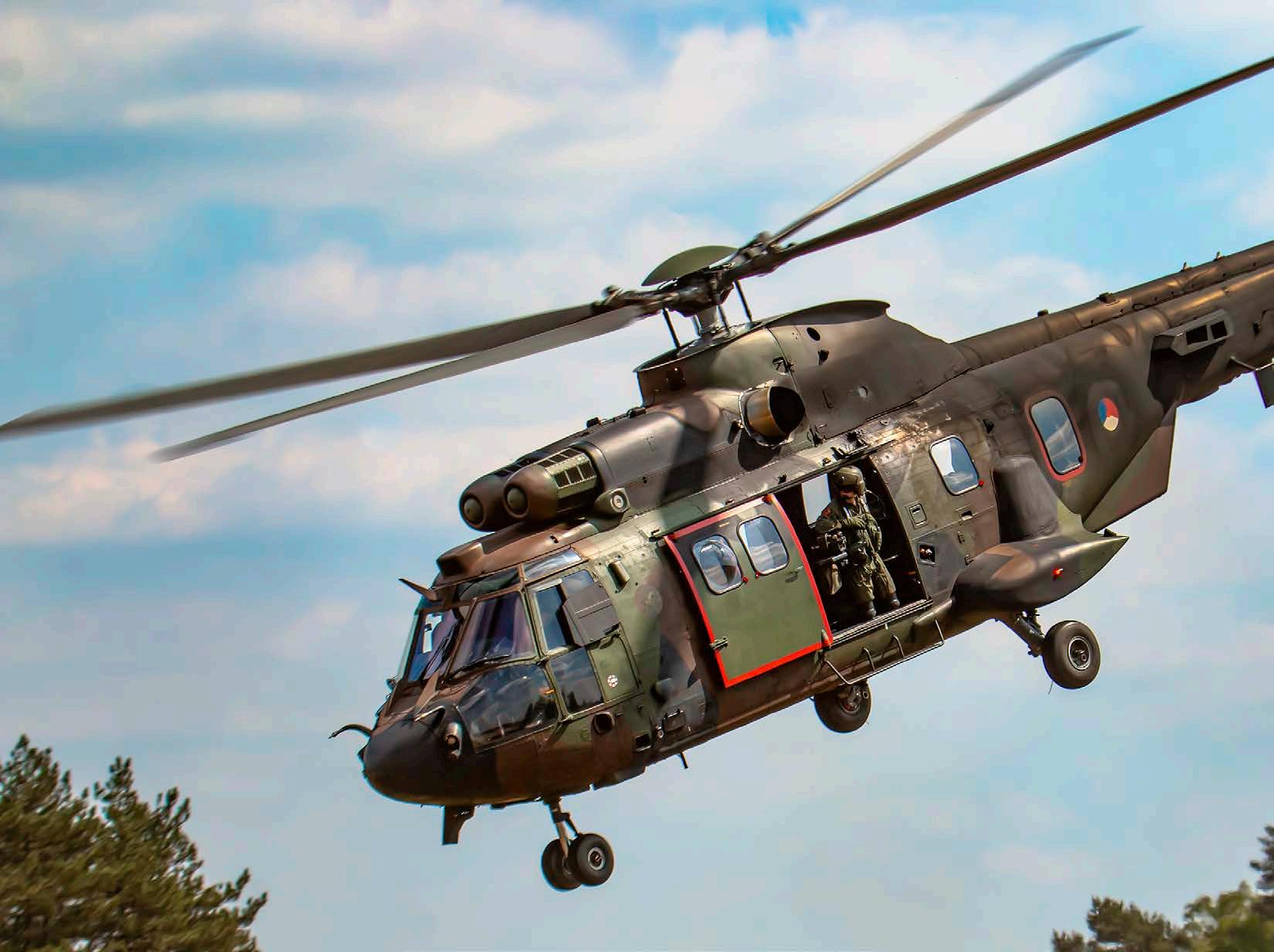



2021 is the year in which the Aerospatiale AS-532 Cougar has been in service with the Royal Netherlands Air Force (RNLAF) for 25 years. In honor of this anniversary, this was celebrated on February 17 with a formation flight of 6 Cougar helicopters!
In 1996 the Cougar entered Dutch service at 300 squadron which belongs to the DHC (Defense Helicopter Command). At that time we received 17 Cougar helicopters of which 12 are still in active service. At that time, the helicopters were still stationed at Soesterberg Air Base, but after a major reorganization within the Dutch Air Force, the squadron was stationed at Gilze Rijen in 2008. At that time, the squadron had also several Alouette III helicopters in addition to the Cougar.
The RNLAF uses the AS532 Cougar mainly for the transport of personnel and equipment. Heavier external loads can be transported underneath the helicopter as a sling load. This means that the helicopters can also be used for firefighting and a so-called “Bambi Bucket” can be hung underneath. Some examples are equipped with floating components so that the helicopters can also serve from naval ships. For some special missions, the crew can be equipped with a "doorgunner". Together with the loadmaster, an FN MAG 7.62 mm machine gun can be operated from the opened side door.
Technical Data
◊ Length: 16.79 m (main rotor folded), 19.50 m rotors turning ◊ Height: 4.60 m (4.97 m with tail rotor turning) ◊ Width: 3.86 m (main rotor folded), 16.20 m main rotor turning ◊ Rotor system: main rotor 4 blades, diameter 16.20 m, 265 revolutions per minute; tail rotor 4 blades, diameter 3.15 m, 1,279 revolutions per minute ◊ Powerplant: two Turbomeca Makila 1A2 Turboshaft ◊ Power: max continuous 1,236 kW; max at takeoff 1,376 kW for five minutes; max continuous single engine 1,420 kW. In an emergency: 1,467 kW for 2 minutes / 1,573 kW for 30 seconds ◊ Weights and loading: empty 4,900 kg, useful load 4,850 kg, standard fuel weight with crashworthy tanks 1,548 kg, max t/o weight 9,750 kg with internal load, max slung load 5,000 kg, max flight weight with slung load 10,500 kg ◊ Speed: never exceed 315 km/h, fast cruising 273 km/h, econ cruising 244 km/h ◊ Range: no reserves, standard fuel, econ cruise 796 km; no reserves, max fuel, econ cruise 1,176 km ◊ Altitude: 3,050 m cruising altitude, 3,960 m for 30 minutes ◊ Crew: two pilots and a loadmaster ◊ Endurance: standard fuel and at 130 km/h 4 h 20 min
Source: Jane's All The World's Aircraft
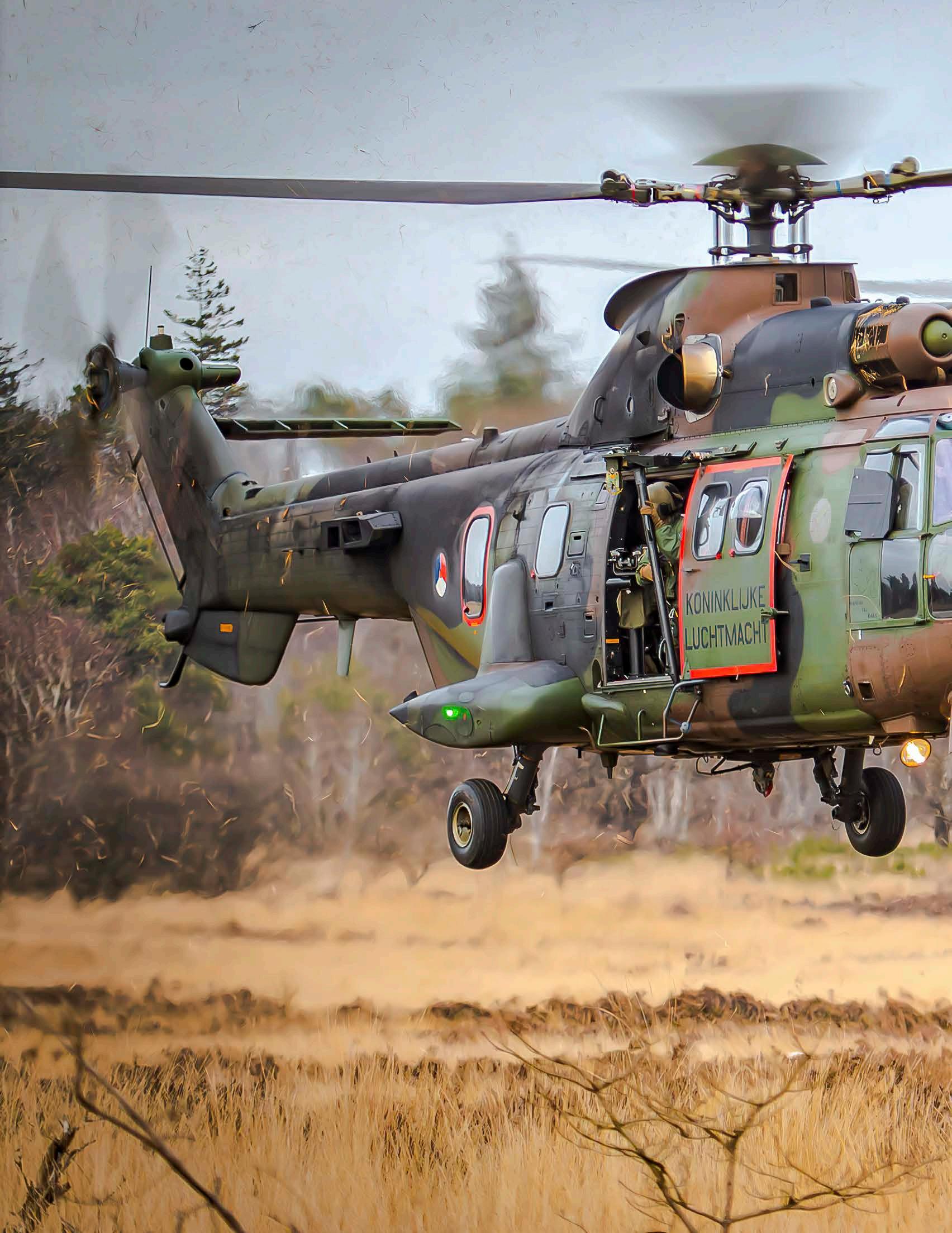


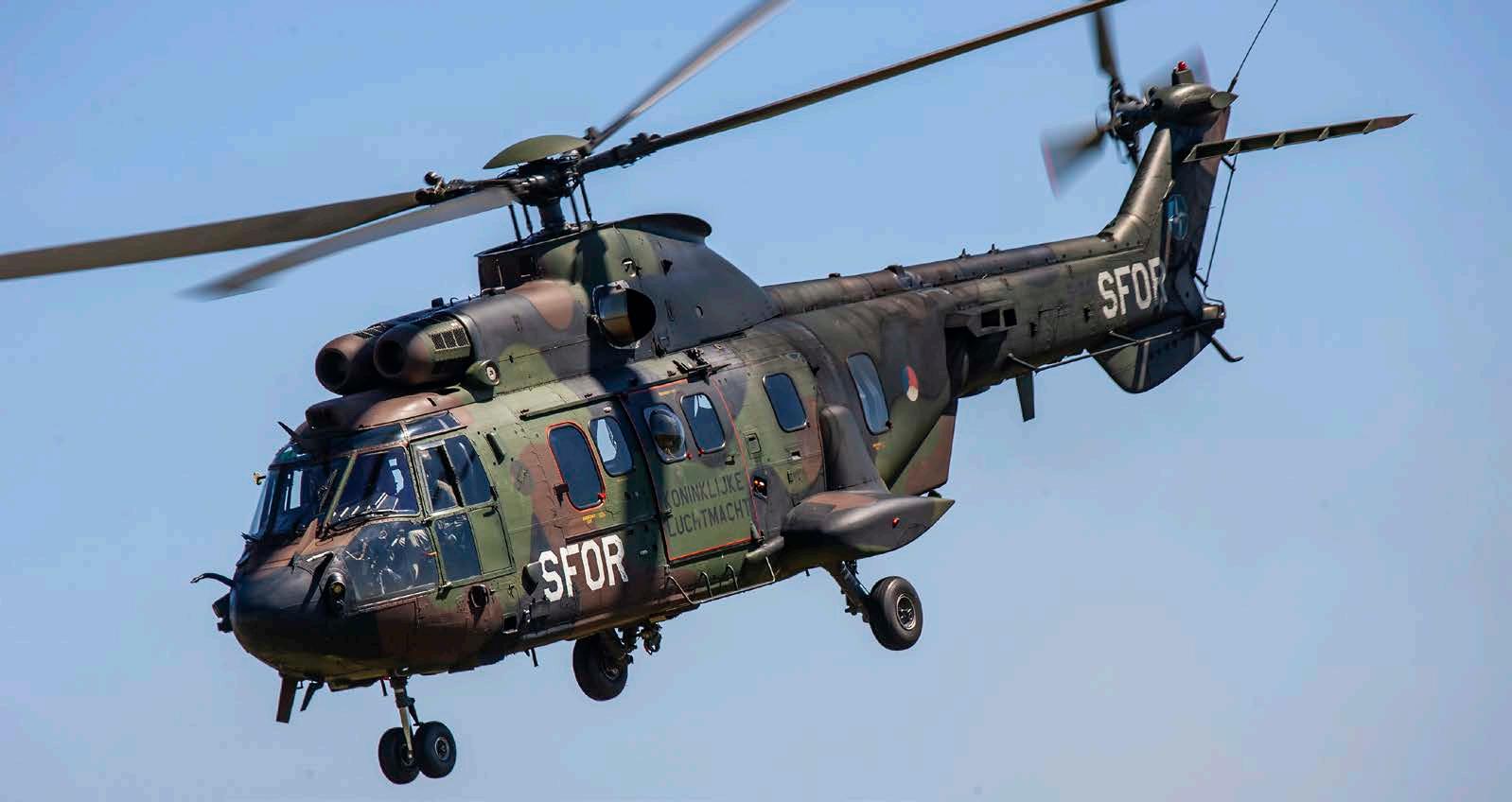
This Cougar took part in the multinational peace keeping force SFOR (Stabilisation Force) in Bosnia and Herzegovina
The SFIR Markings indicate that this helicopter participated in the operation 'Stabilization Force Iraq SFIR'

MISSIONS AND DEPLOYMENTS
Over the years, Cougars have been deployed several times in various conflicts and humanitarian missions worldwide:
◊ In 2001 and 2002, the helicopters took part in
Stabilization Force (SFOR) in Bosnia. ◊ In 2004, the Cougar took over from the Chinook
Detachment in Iraq as part of operation
Stabilization Force Iraq (SFIR). The helicopters mainly transported personnel and equipment and were on standby 24/7 for medical evacuations of Dutch soldiers. During Iraq's first free elections, the Cougars were used to transport and distribute voting tickets across the country. ◊ To support fighting forest fires, in 2005, RNLAF
Cougars were sent to Portugal, and in August 2007 to Greece.
◊ The helicopters have also been used during anti-pirate missions of the coast of Somalia. ◊ From April 2006 to 2010, the Cougars were active during ISAF in Afghanistan on behalf of
Task Force Uruzgan. ◊ From naval vessel Hr. Ms. In Rotterdam they carried out reconnaissance flights in 2012, 2013, and 2017, transported boarding teams of marines and even stopped suspicious ships. ◊ Until 2015, the device was used within the country's borders as patients transport from the Wadden Islands which are located in the upper north of the Netherlands in the Wadden
Sea.
◊ In 2019, 300 Squadron was deployed with two
Cougars for emergency relief after Hurricane
Dorian in the Bahamas and recently in 2020, they flew from naval vessel Karel Doorman in the Caribbean for the deployment of people and equipment in the fight against the COVID-19.

The AS532 Cougar can be equipped with a "Bambi Bucket". This is a large, fully collapsable bag that can be hung underneath the helicopter. The pilot lowers the bucket into a river, a lake, or even a swimming pool to fill the bucket with up to 2,500 liters of water. The water then can be dropped in several ways on a target as needed, e.g. to wet a specific area/building to prevent the fire from spreading or to extinguish a fire at a specific location.
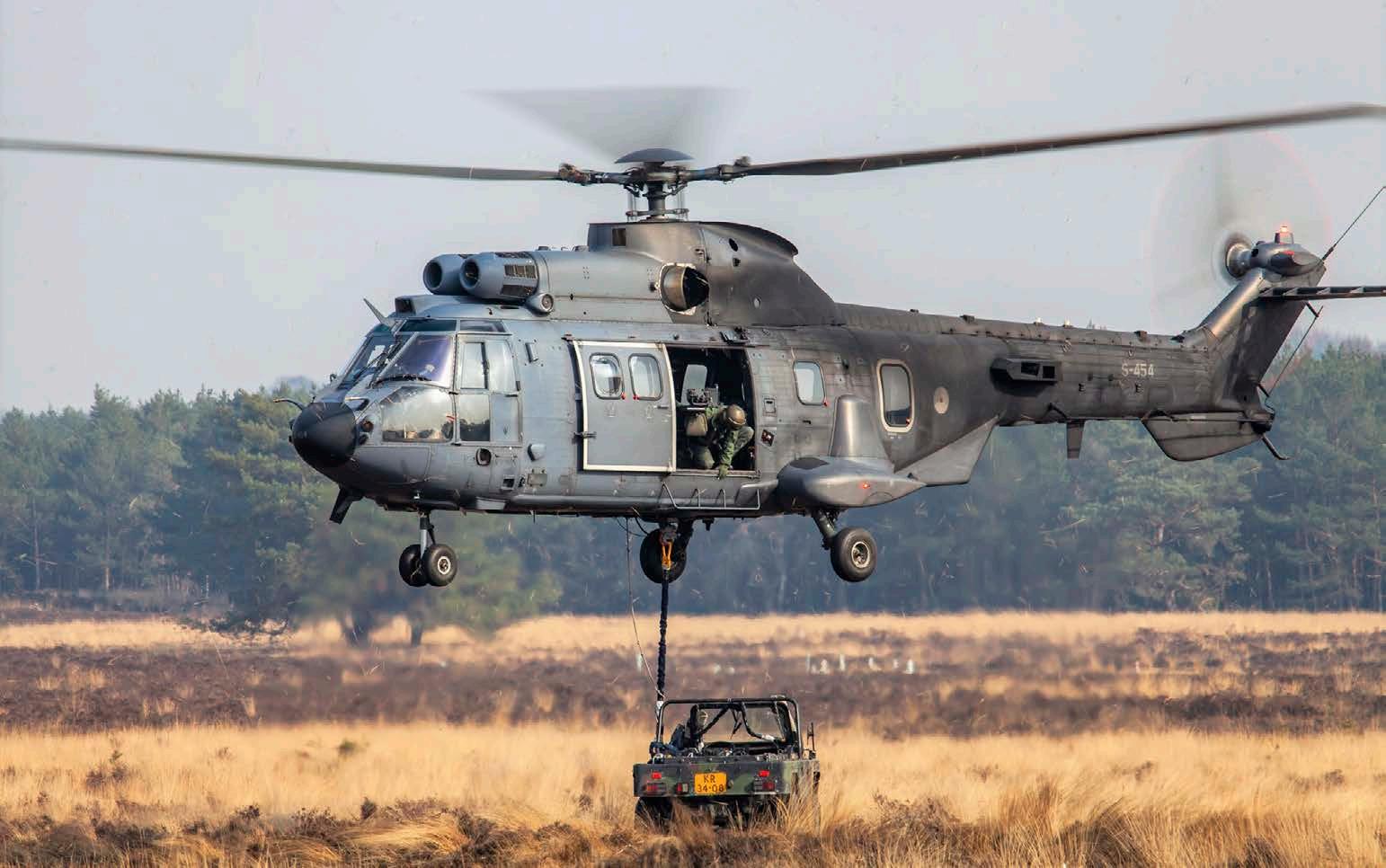
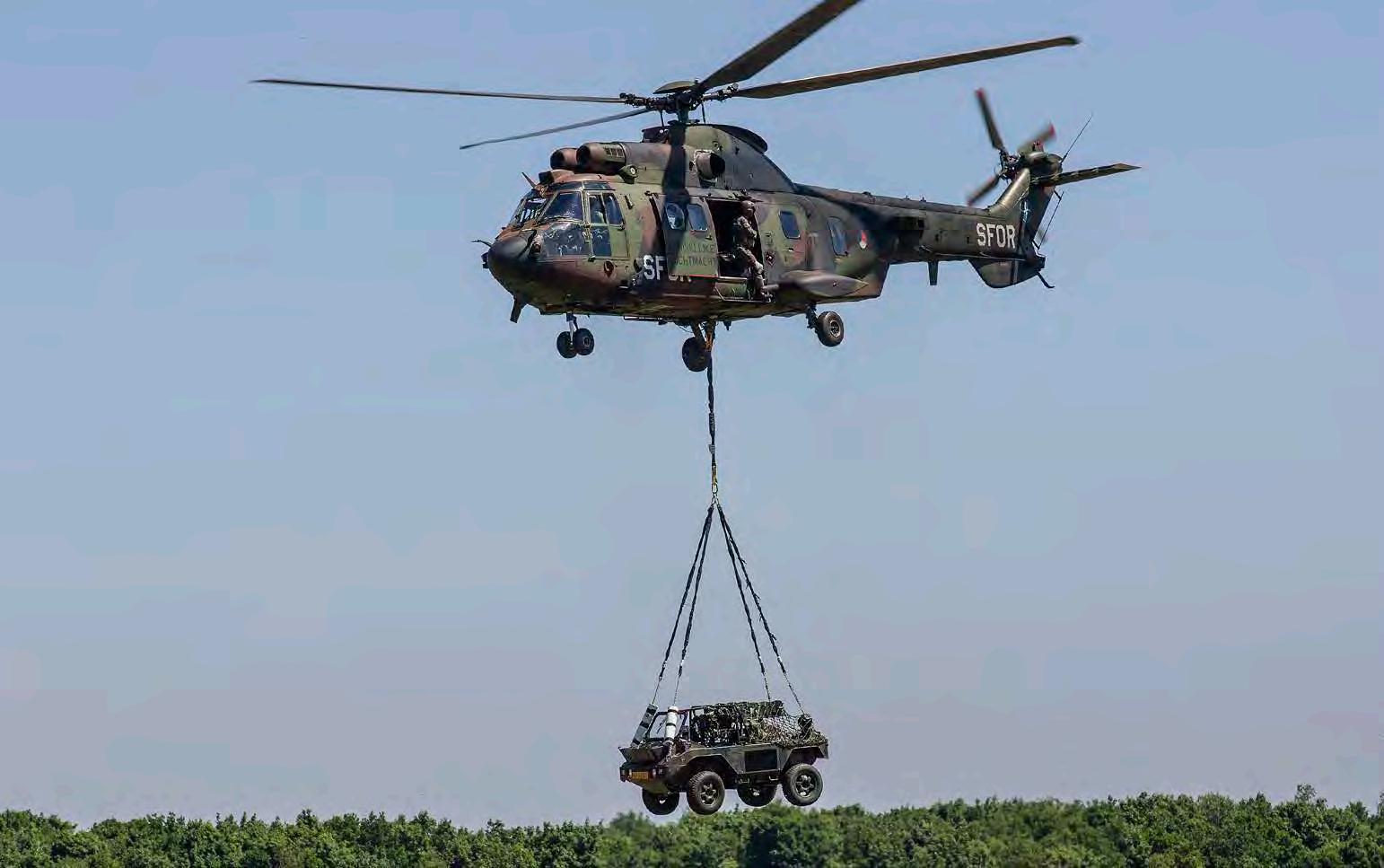
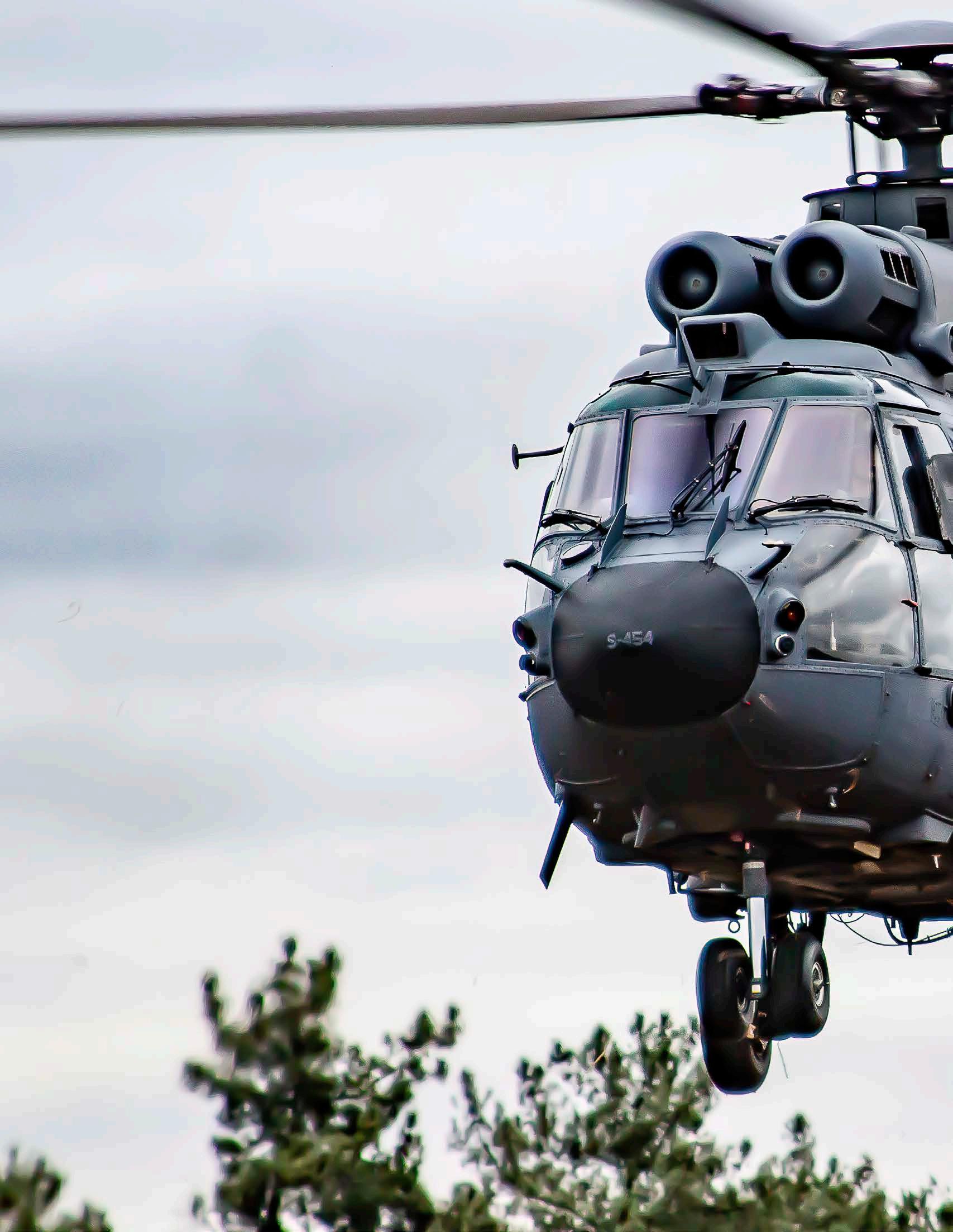
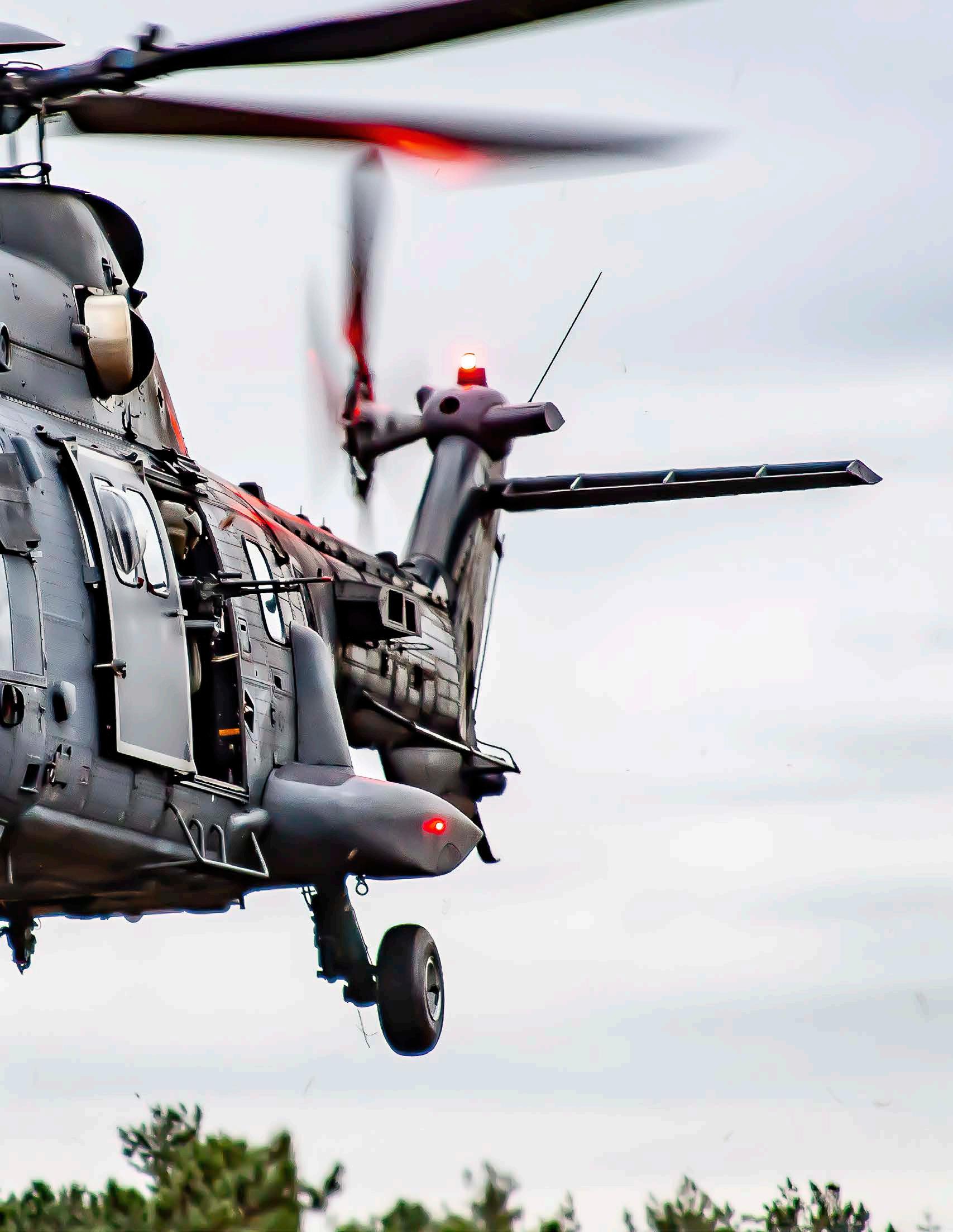

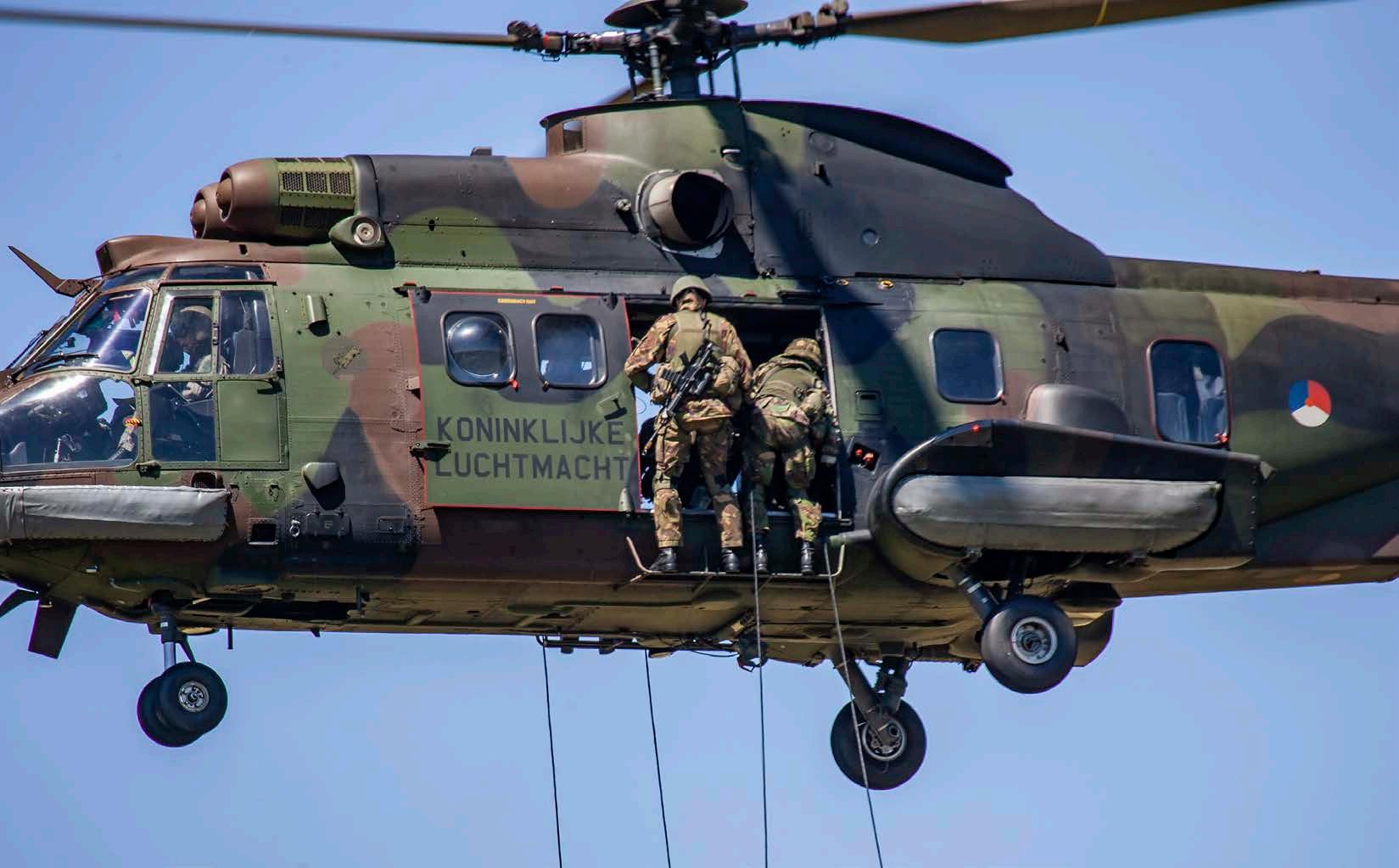


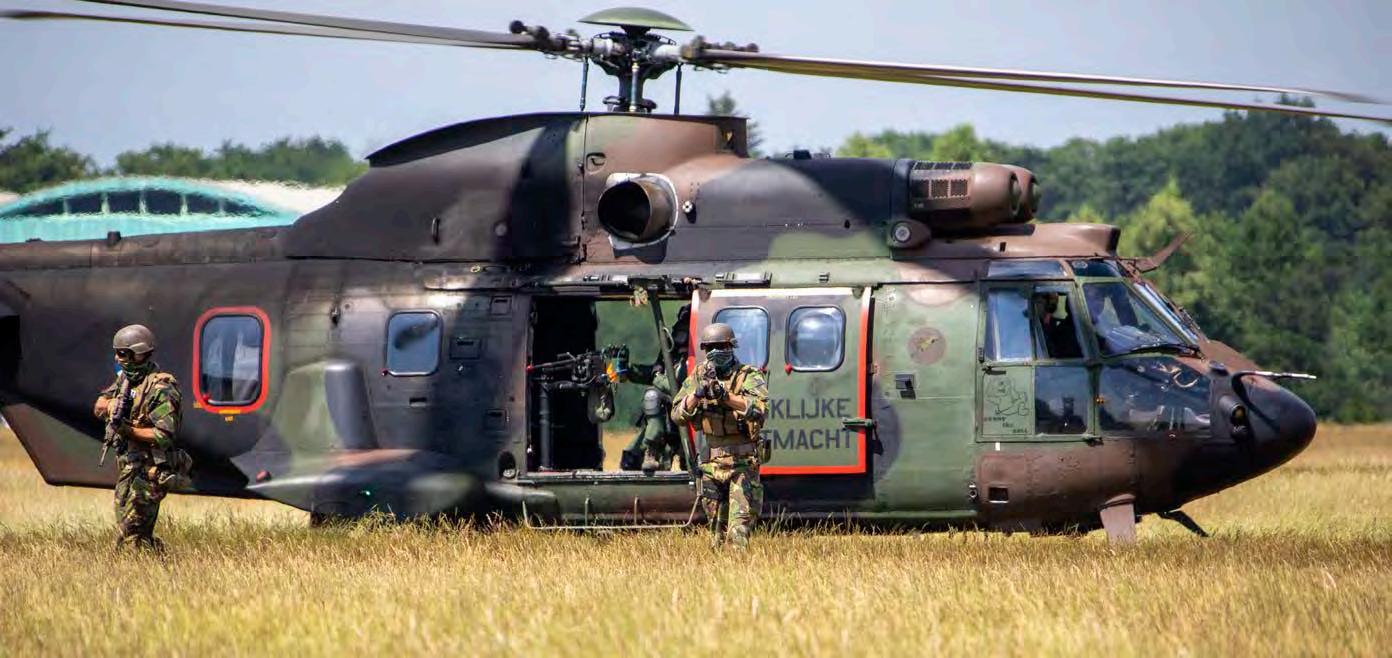
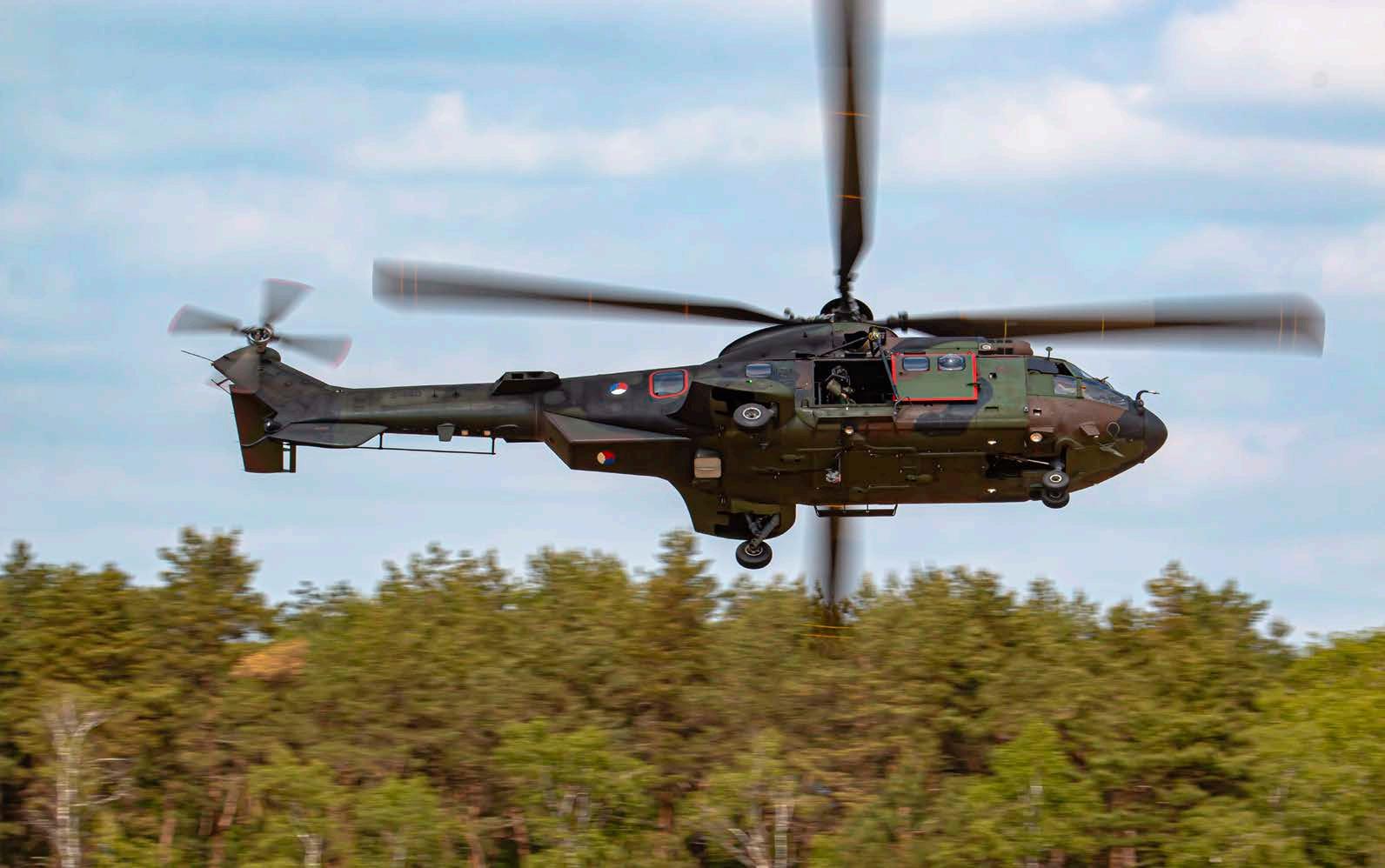
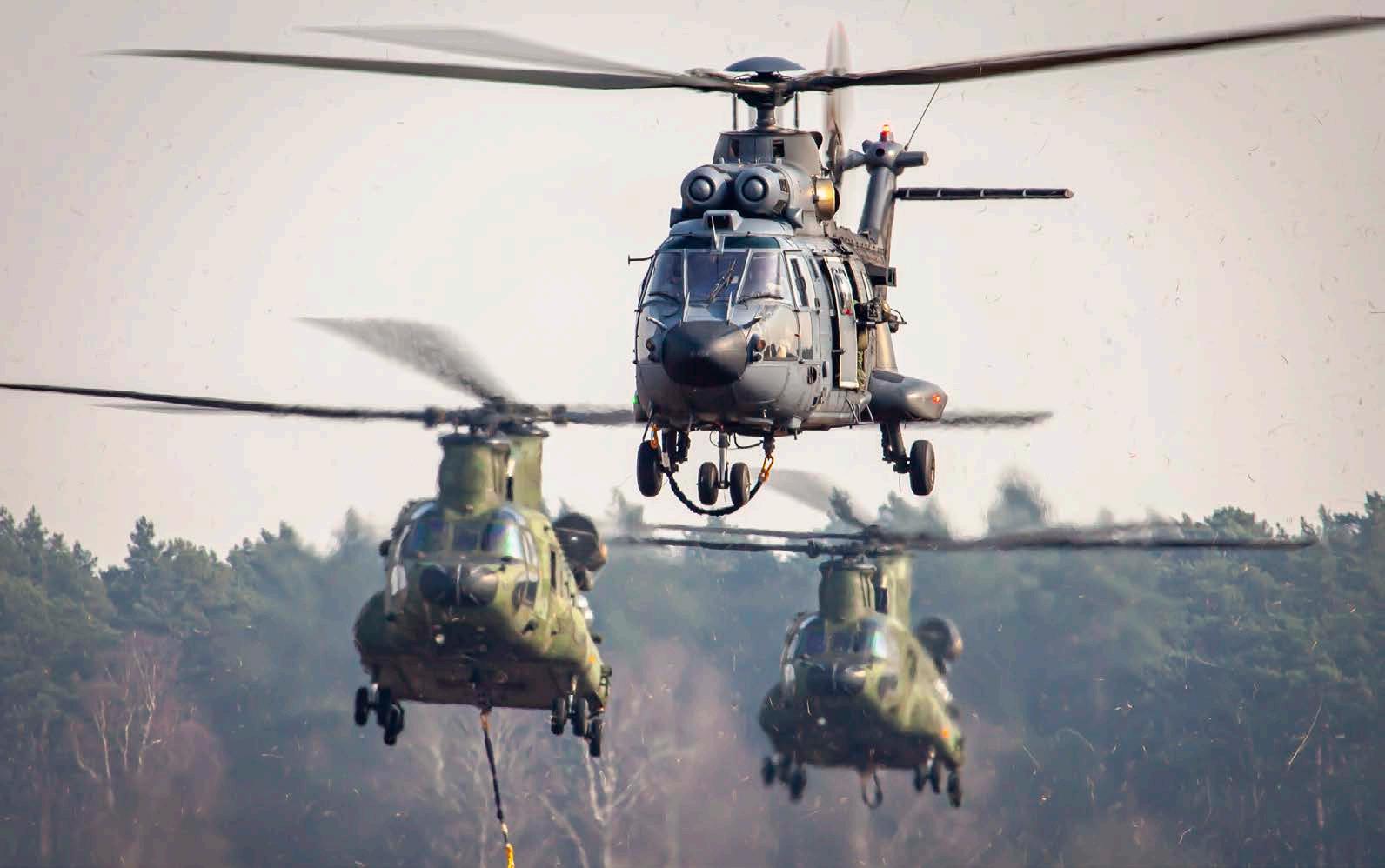
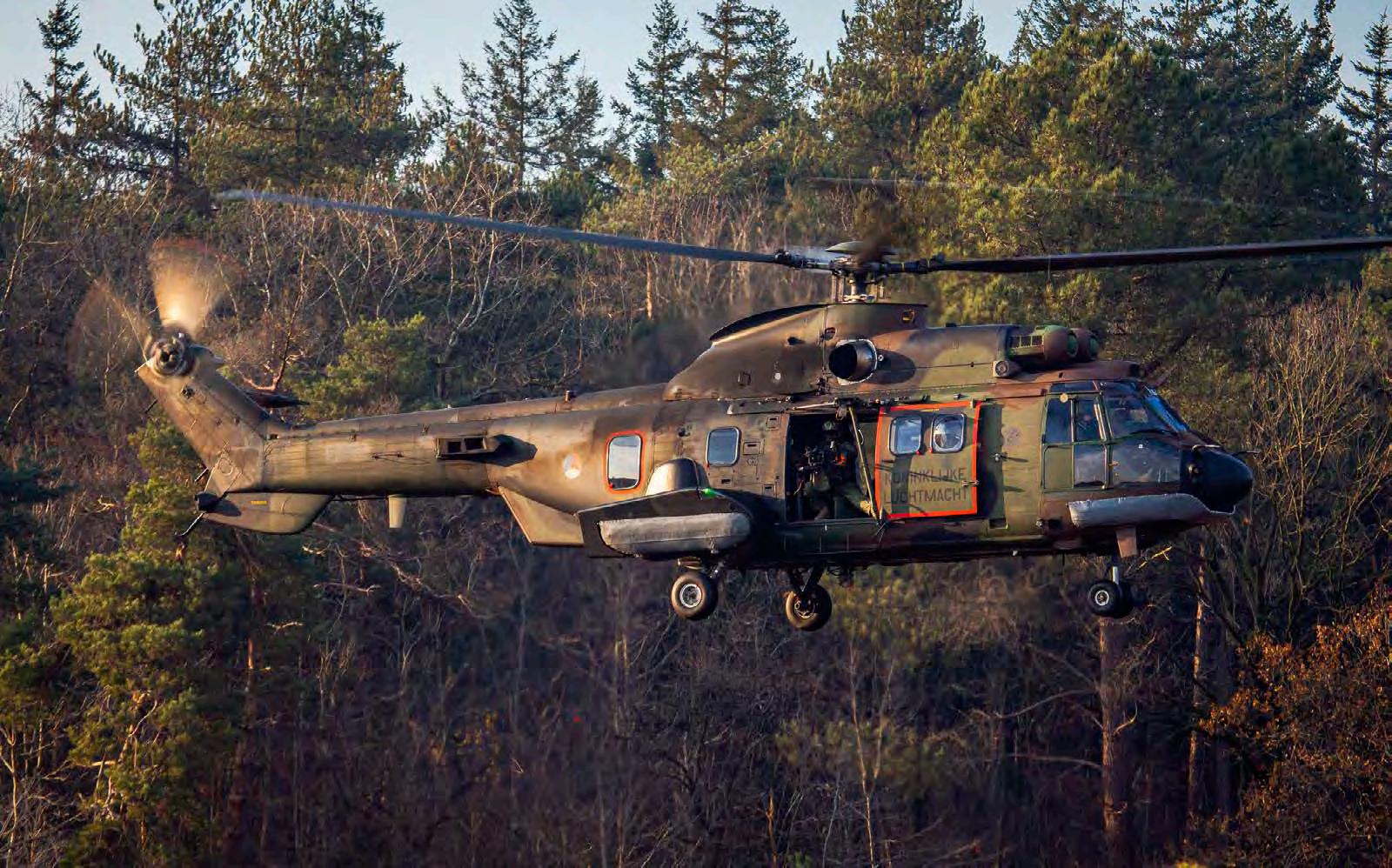
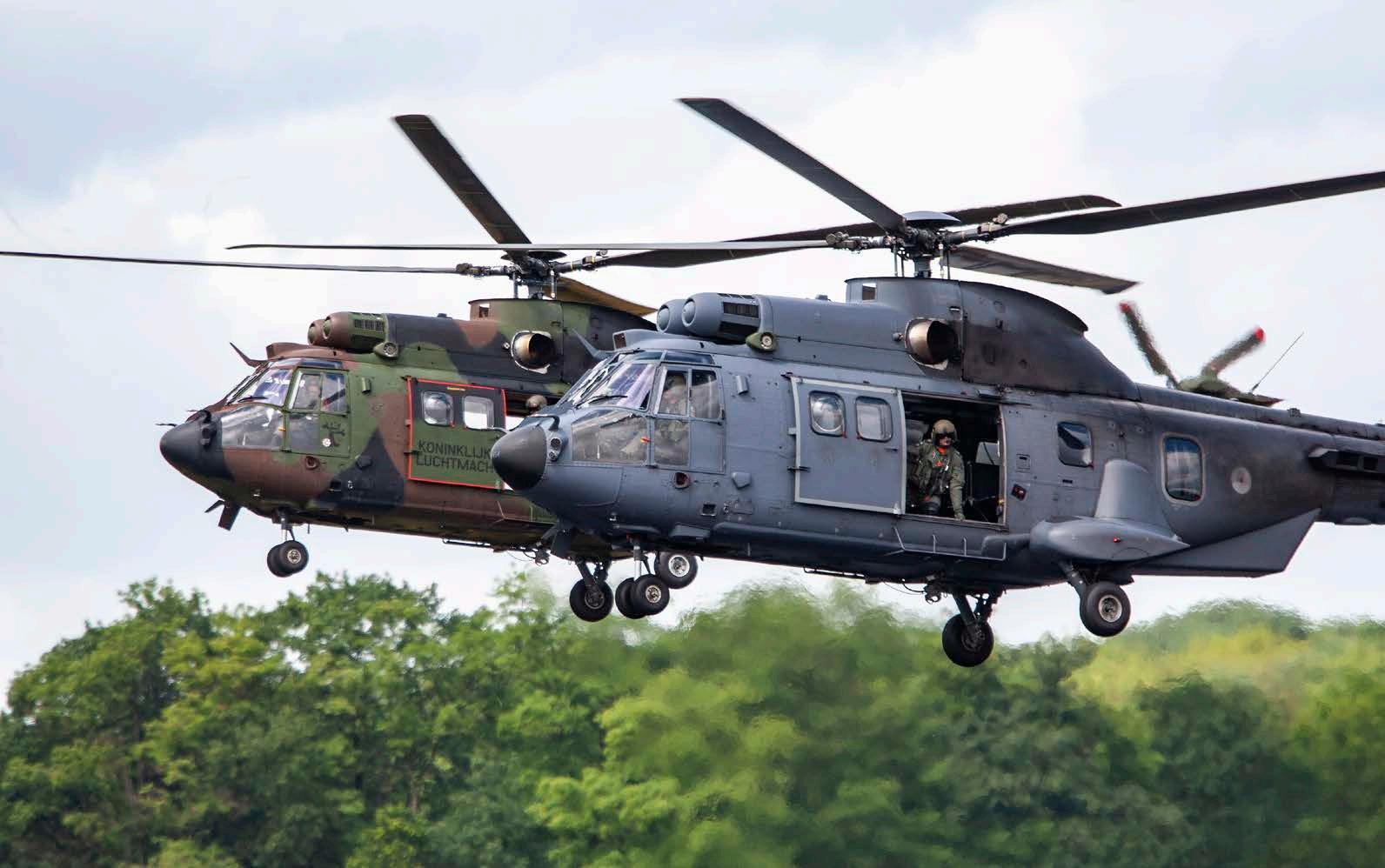

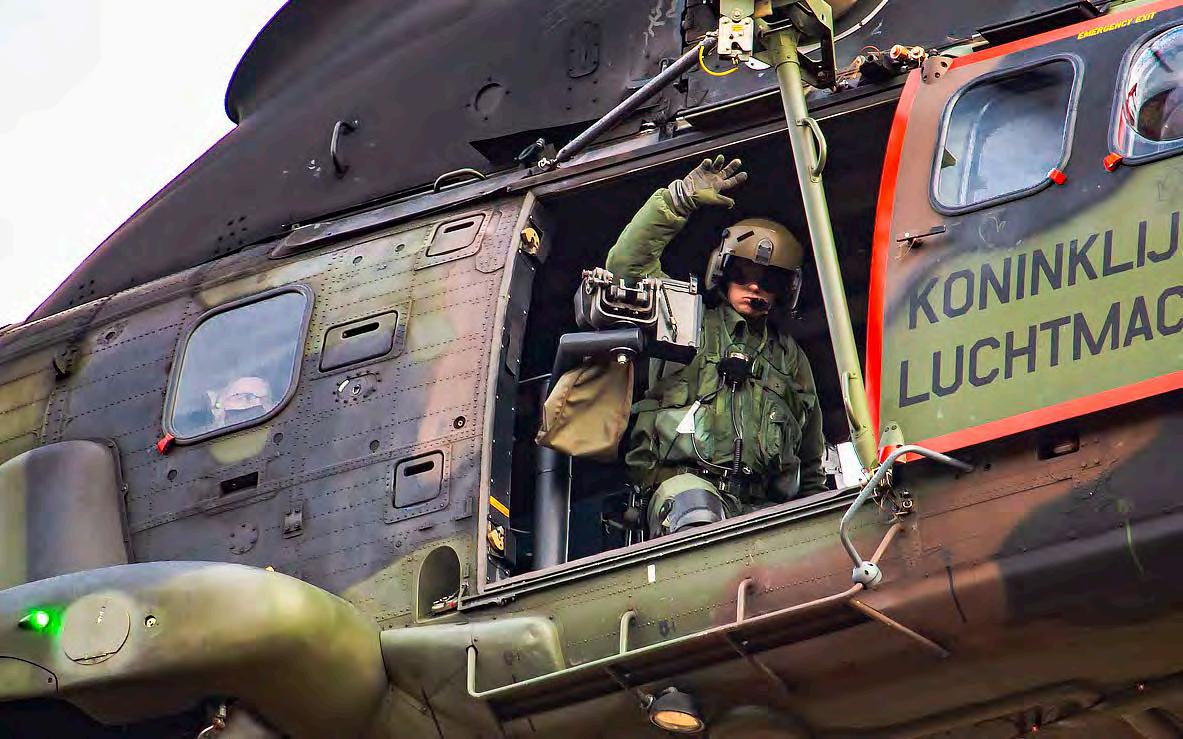
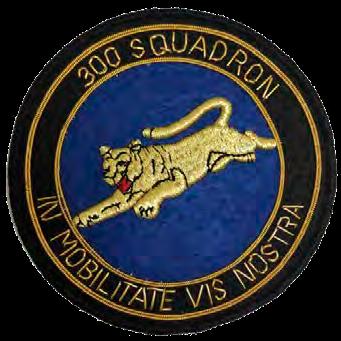
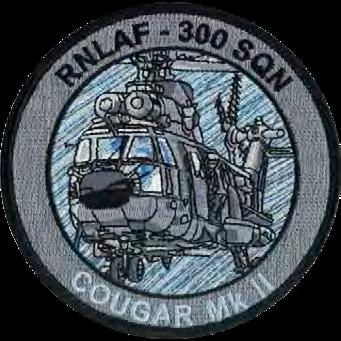
The Future of the Cougar Fleet
In the course of major cutbacks within the Dutch armed forces, the RNLAF had to retire the Cougars much earlier than planned. To be replaced by the new NH90 helicopter, in 2011, the Cougars were taken out of service. In 2012, nine of the helicopters went into storage. The rest of them were to be phased out by 2017. However, this turned out to be only temporary!
Due to problems with the deployability of the NH90 – mostly attributed to corrosion issues of metal components during initial maritime operations – the RNLAF decided to reactivate the mothballed helicopters so almost all Cougars currently are in operational service again. However, because of the early retirement, the helicopters never received a midlife update (MLU). To keep the helicopters in service and deployable until the end of their lifespan around 2030, the RNLAF plans to perform some updates/ upgrades in the near future.
So the Cougars in Dutch service are still "going strong"





